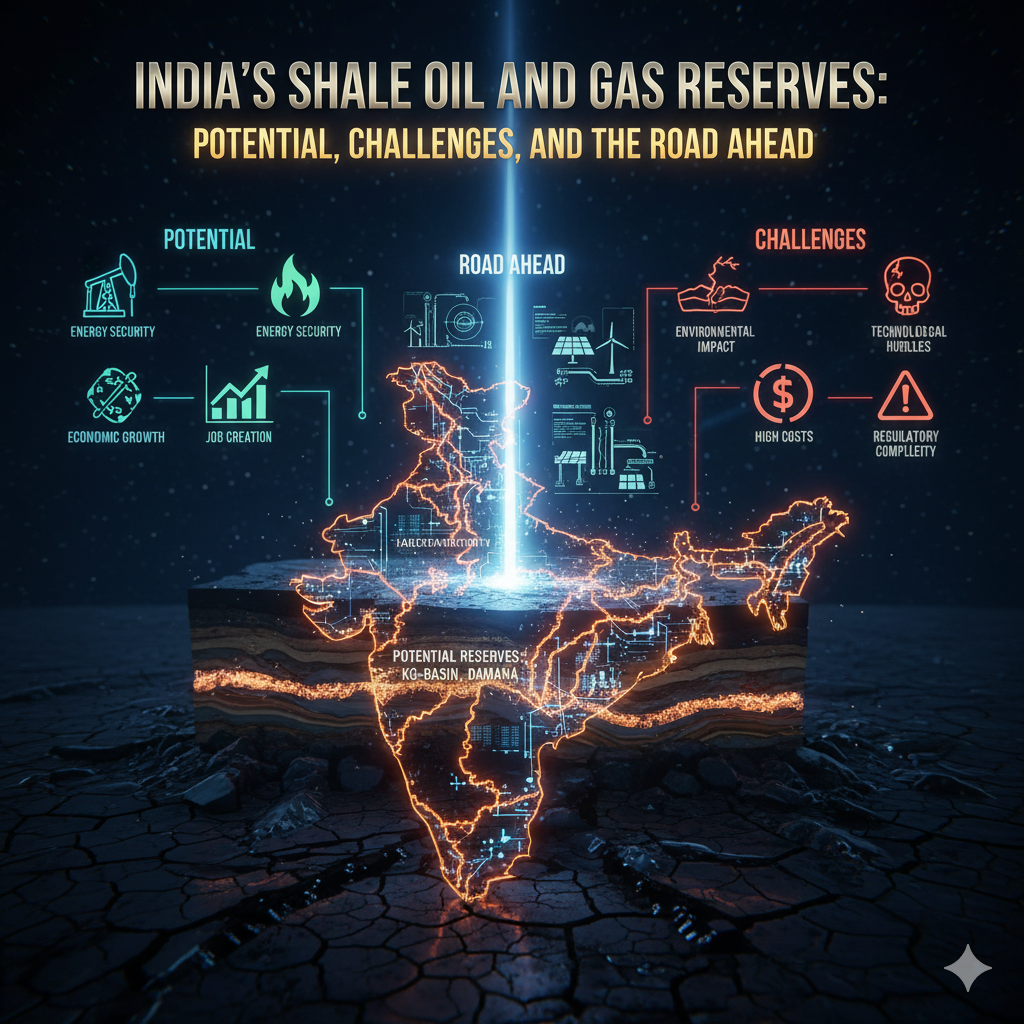Introduction
Desertification, often misunderstood as the spread of deserts, is in fact a process of land degradation in arid, semi-arid, and dry sub-humid areas due to various factors including climatic variations and human activities. It reduces the productive capacity of land, leading to a loss of biodiversity, livelihood, and economic security. Globally, over 24% of the Earth’s land is affected by desertification, impacting the lives of more than 1.5 billion people.
In India, where nearly 30% of the total geographical area is degraded, desertification is a significant environmental challenge. The states of Rajasthan and Gujarat, located in the Thar Desert and semi-arid regions, are particularly vulnerable. The urgency to address desertification is not just an ecological concern but also critical for food security, poverty alleviation, and climate resilience.
Understanding Desertification: Global Overview
What is Desertification?
According to the United Nations Convention to Combat Desertification (UNCCD), desertification refers to land degradation in arid, semi-arid, and dry sub-humid areas resulting from various factors, including climatic variations and human activities.
Global Causes
- Unsustainable land use practices: Overgrazing, deforestation, monoculture farming.
- Climate change: Prolonged droughts, erratic rainfall, and increased temperatures.
- Population pressure: Expanding settlements and agricultural frontiers.
- Water mismanagement: Over-extraction of groundwater and poor irrigation techniques.
Global Hotspots
- Sub-Saharan Africa: Sahel region facing severe degradation and food insecurity.
- Central Asia: Dryland degradation in Kazakhstan, Uzbekistan.
- Australia and China: Large tracts of arid lands losing vegetation cover.
- South America: Deforestation-driven desertification in parts of Brazil and Argentina.
Desertification in India: Scope and Severity
Extent of the Problem
As per the ISRO’s Desertification and Land Degradation Atlas (2021), nearly 97.85 million hectares or 29.7% of India’s total land is undergoing desertification or degradation.
States Most Affected
- Rajasthan: The highest area under desertification.
- Maharashtra, Gujarat, Karnataka, Madhya Pradesh, and Telangana also face significant degradation.
Focus on Rajasthan and Gujarat
Rajasthan: The Thar Desert Challenge
- Climatic Conditions: Arid and semi-arid zones, with annual rainfall less than 250 mm in western districts.
- Land Degradation Factors:
- Overgrazing by livestock.
- Deforestation and mining in areas like Barmer and Jaisalmer.
- Unsustainable farming practices and salinity intrusion due to poor irrigation.
- Impact:
- Sand dune encroachment on agricultural land.
- Water scarcity and deepening water tables.
- Migration due to unproductive land and loss of livelihood.
Gujarat: Dual Threats of Arid Zones and Industrial Expansion
- Affected Regions: Kutch, Banaskantha, and parts of Saurashtra.
- Degradation Causes:
- Salinity ingress due to excessive groundwater extraction.
- Industrial pollution, especially in coastal belts.
- Deforestation for timber and agriculture.
- Impact:
- Reduced crop yields and abandoned farms.
- Contamination of freshwater sources.
- Biodiversity loss in grasslands and mangroves.
Socio-Economic and Environmental Impact
1. Food and Water Insecurity
- Desertification reduces the fertility of soil, leading to lower agricultural productivity.
- Scarce water resources put pressure on drinking water and irrigation supplies, especially in drought-prone villages.
2. Loss of Livelihoods
- Over 60% of India’s population depends on agriculture, and degraded lands threaten employment, especially in rural areas.
- Migration to urban slums becomes inevitable, creating socio-economic stress.
3. Climate Change Amplification
- Desertification contributes to carbon release from soils and vegetation, amplifying global warming.
- Loss of vegetation cover disrupts carbon sinks, affecting climate regulation.
4. Biodiversity Degradation
- Drylands support a variety of life forms. Desertification leads to loss of native flora and fauna, soil microbes, and vital pollinators.
India’s Efforts to Combat Desertification
India, a signatory to the United Nations Convention to Combat Desertification (UNCCD), has adopted several national and state-level measures to reverse land degradation.
1. National Action Plan to Combat Desertification (NAPCD)
- Launched in line with UNCCD guidelines.
- Focuses on:
- Sustainable land use.
- Afforestation and watershed development.
- Capacity building and community participation.
2. Desert Development Programme (DDP)
- One of the oldest schemes, focused on soil and water conservation, afforestation, and agroforestry.
- Implemented in 21 desert-prone districts across Rajasthan, Gujarat, Haryana, and Jammu & Kashmir.
3. National Afforestation Programme (NAP)
- Aims to regenerate degraded forest lands using a participatory approach.
- Community Forest Management Committees are involved for sustainable practices.
4. Integrated Watershed Management Programme (IWMP)
- Promotes soil and moisture conservation through ridge-to-valley treatment.
- Enhances groundwater recharge and cropping intensity in dryland areas.
Strategies for Sustainable Land Use and Desertification Control
To effectively combat desertification and ensure long-term land sustainability, India must pursue an integrated and multi-dimensional approach:
1. Sustainable Agriculture Practices
- Agroforestry: Combining crops with trees to maintain soil fertility and prevent erosion.
- Crop rotation and mixed cropping: Reduces soil nutrient depletion.
- Organic farming: Avoids chemical degradation and maintains biological health of the soil.
2. Water Resource Management
- Rainwater harvesting: Essential in Rajasthan and Gujarat to trap monsoon runoff.
- Drip and sprinkler irrigation: Promotes efficient water use and reduces soil salinity.
- Restoration of traditional water bodies: Stepwells (baolis), johads, and tanks.
3. Afforestation and Grassland Development
- Planting of drought-resistant species and native grasses.
- Development of silvipasture systems to integrate fodder and fuelwood trees.
- Protection of existing forests and preventing illegal grazing.
4. Climate-Resilient Infrastructure
- Promoting climate-smart villages that integrate renewable energy, water conservation, and sustainable farming.
- Infrastructure that minimizes land disturbance, such as eco-friendly roads and rural housing.
5. Community Participation and Traditional Knowledge
- Involving local communities, especially women and indigenous groups, in land restoration.
- Reviving indigenous conservation practices, such as sacred groves and customary grazing cycles.
6. Monitoring and Policy Integration
- Use of GIS and satellite imagery (like Bhuvan by ISRO) for mapping degraded lands.
- Integration of land degradation neutrality goals into national development planning.
- Strengthening land-use laws and enforcing land zoning regulations.
Success Stories and Best Practices
1. Watershed Management in Ralegan Siddhi, Maharashtra
- Led by social activist Anna Hazare, the village transformed from a degraded zone to a model of water conservation and agroforestry.
- Shows how community involvement and traditional wisdom can reverse desertification.
2. Banni Grasslands, Gujarat
- Efforts by NGOs and the Forest Department to protect and regenerate grasslands through controlled grazing and native seeding.
- Revival of pastoralist economy in the region.
3. Indira Gandhi Canal Project (Rajasthan)
- Brought irrigation to the Thar Desert, turning barren land into cultivable fields.
- However, it also highlights the need for sustainable canal management to avoid salinity and waterlogging.
Global Cooperation and India’s Role
As the host of COP14 to UNCCD in 2019, India committed to restoring 26 million hectares of degraded land by 2030.
India’s International Contributions:
- Sharing best practices with African and Asian countries through South-South Cooperation.
- Active participation in the Great Green Wall initiative to combat desertification across the Sahel.
Conclusion
Desertification is a silent and slow-moving disaster, but its implications are far-reaching—affecting food, water, health, and economic stability. In India, where agriculture is the backbone of the rural economy and arid regions like Rajasthan and Gujarat are highly vulnerable, tackling desertification is not optional—it is essential.
By embracing sustainable land use, empowering local communities, and integrating scientific innovation with traditional knowledge, India can not only halt the spread of deserts but also ensure resilient and productive landscapes for future generations.




